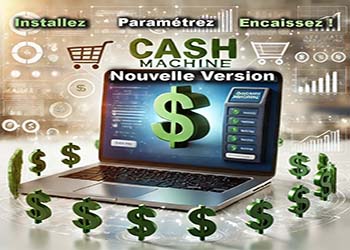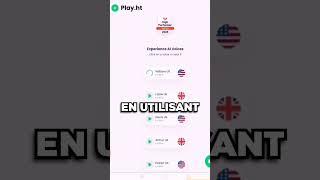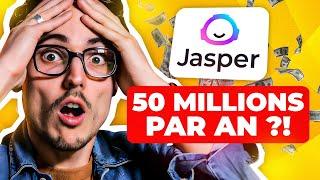You’ve noticed unexpected, seemingly AI-generated audio in your YouTube Shorts, not added by you, raising the question: is this a “ghost in the machine,” with YouTube’s algorithm somehow “speaking” to you? Let’s explore likely causes and address this idea, keeping it concise.
Possible Causes of the Anomaly
1. YouTube’s AI Tools: YouTube’s integration of AI, like Google DeepMind’s Veo 2 for Shorts (via Dream Screen), can generate video or audio from text prompts. A glitch might insert AI-generated audio, like a voiceover, during upload or processing, especially since Veo 2 rolled out in 2025 in regions like the US and Canada.
2. Third-Party Editing Tools: If you used AI platforms (e.g., InVideo, OpusClip), they might have added voiceovers or background audio by default. A misconfiguration or overlooked setting could embed unintended audio. Less likely, a hacked account could introduce changes, but this would typically show other signs.
3. YouTube Processing Errors: YouTube’s upload pipeline sometimes applies auto-enhancements (e.g., captions, audio normalization). A bug could misinterpret metadata, adding an erroneous audio track, possibly from tools like Dream Track (AI music generation).
4. Content ID Glitches: YouTube’s Content ID system scans for copyrighted audio. If your Short triggered a match, the system might replace or add audio, though this usually involves creator notification. A glitch could bypass this.
5. User Oversight: Unintentional audio capture (e.g., from a voice assistant during recording) or default audio settings in editing software might explain the issue. Check your recording and editing process.
Is the Algorithm “Speaking”?
The notion of YouTube’s algorithm becoming sentient or communicating is unlikely. It’s a recommendation system, not a generative AI with intent. However, the “ghostly” feel could stem from:
• AI Complexity: Tools like Veo 2 produce complex outputs that can seem autonomous when they glitch.
• Data-Driven Outputs: YouTube’s AI uses your data (uploads, views), so errors might feel oddly personalized.
• Cultural Lens: Sci-fi narratives about AI sentience can make glitches seem intentional.
In reality, this is likely a technical error, not a sentient algorithm.
What to Do
1. Check YouTube Studio: Look for AI content labels (e.g., Dream Screen) or unexpected audio tracks in upload details.
2. Review Editing Tools: Ensure third-party platforms didn’t add default audio. Check settings in tools like Predis.ai.
3. Contact Support: Report the issue via YouTube’s help center, detailing the audio and Short.
4. Secure Account: Change your password and enable two-factor authentication.
5. Test Upload: Try a simple Short to isolate platform vs. editing issues.
Takeaway
This anomaly likely results from YouTube’s AI tools, editing software, or platform glitches, not a “smart” algorithm communicating. As AI integration grows, such quirks may increase, highlighting the need for creator control and transparency.
Possible Causes of the Anomaly
1. YouTube’s AI Tools: YouTube’s integration of AI, like Google DeepMind’s Veo 2 for Shorts (via Dream Screen), can generate video or audio from text prompts. A glitch might insert AI-generated audio, like a voiceover, during upload or processing, especially since Veo 2 rolled out in 2025 in regions like the US and Canada.
2. Third-Party Editing Tools: If you used AI platforms (e.g., InVideo, OpusClip), they might have added voiceovers or background audio by default. A misconfiguration or overlooked setting could embed unintended audio. Less likely, a hacked account could introduce changes, but this would typically show other signs.
3. YouTube Processing Errors: YouTube’s upload pipeline sometimes applies auto-enhancements (e.g., captions, audio normalization). A bug could misinterpret metadata, adding an erroneous audio track, possibly from tools like Dream Track (AI music generation).
4. Content ID Glitches: YouTube’s Content ID system scans for copyrighted audio. If your Short triggered a match, the system might replace or add audio, though this usually involves creator notification. A glitch could bypass this.
5. User Oversight: Unintentional audio capture (e.g., from a voice assistant during recording) or default audio settings in editing software might explain the issue. Check your recording and editing process.
Is the Algorithm “Speaking”?
The notion of YouTube’s algorithm becoming sentient or communicating is unlikely. It’s a recommendation system, not a generative AI with intent. However, the “ghostly” feel could stem from:
• AI Complexity: Tools like Veo 2 produce complex outputs that can seem autonomous when they glitch.
• Data-Driven Outputs: YouTube’s AI uses your data (uploads, views), so errors might feel oddly personalized.
• Cultural Lens: Sci-fi narratives about AI sentience can make glitches seem intentional.
In reality, this is likely a technical error, not a sentient algorithm.
What to Do
1. Check YouTube Studio: Look for AI content labels (e.g., Dream Screen) or unexpected audio tracks in upload details.
2. Review Editing Tools: Ensure third-party platforms didn’t add default audio. Check settings in tools like Predis.ai.
3. Contact Support: Report the issue via YouTube’s help center, detailing the audio and Short.
4. Secure Account: Change your password and enable two-factor authentication.
5. Test Upload: Try a simple Short to isolate platform vs. editing issues.
Takeaway
This anomaly likely results from YouTube’s AI tools, editing software, or platform glitches, not a “smart” algorithm communicating. As AI integration grows, such quirks may increase, highlighting the need for creator control and transparency.
- Catégories
- prompts ia














Commentaires